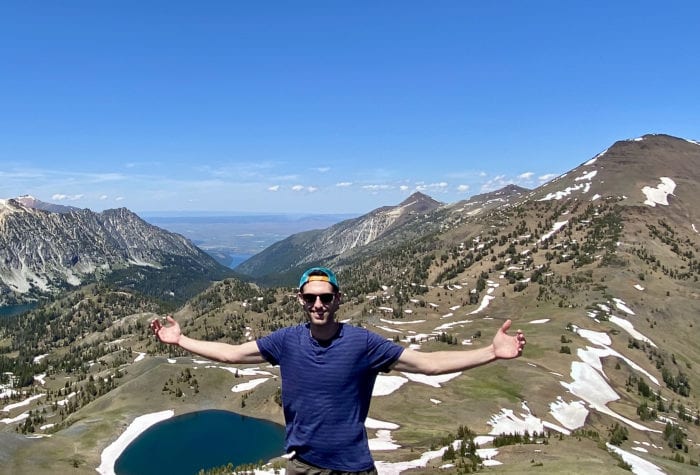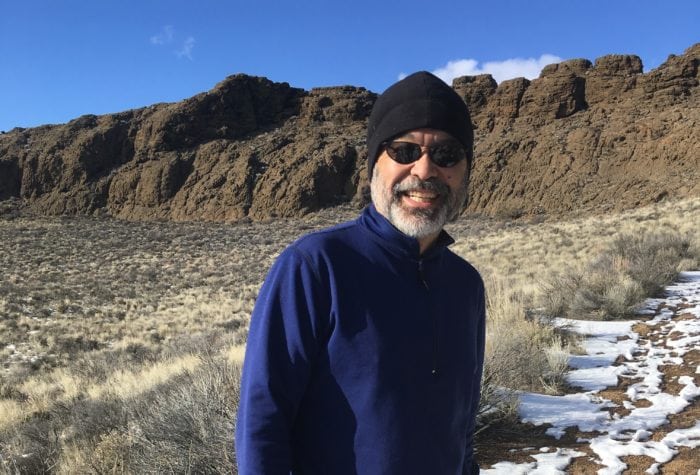Malheur National Wildlife Refuge Fence Pull
Lloyd Irwin
| Organizer: Beth Macinko
Start Date: 11/9/2020 End Date: 11/12/2020 Region: Steens Difficulty Rating: 3 out of 5 Maximum Group Size: 15 participants |
About the place
Malheur National Wildlife Refuge is a truly amazing place of incredible value to wildlife, and it needs our help. President Theodore Roosevelt dedicated the Lake Malheur Reservation on August 18, 1908 in order to protect the area’s extensive bird population from overzealous ‘plume hunters’ trying to supply the lucrative hat industry. It was later renamed the Malheur National Wildlife Refuge and added to the National Wildlife Refuge System. Located about 30 miles south of Burns, the Malheur National Wildlife Refuge encompasses 187,757 acres of wetlands, lakes, dry lakes, native grass meadows and many other land types. This huge diversity of land forms, vegetation and water make the refuge incredibly vital for wildlife living in or passing through the northern Great Basin desert. Water, arguably the most critical component of the refuge, comes primarily from the Donner und Blitzen and Silvies Rivers as well as Silver Creek.
Today the refuge is best known for the same reason it was originally protected: birds. During seasonal migrations, the refuge plays host to 20% of the world’s population of white-faced ibis, as well as significant populations of pelicans and sandhill cranes. The area is truly a birder’s paradise and a bird’s paradise. Hundreds of thousands of birds depend on the refuge every year for either permanent residence or for migration. But this habitat needs care-taking and significant restoration. With this restoration trip, ONDA continues our multi-year partnership with refuge staff in order to ensure the long term survival of this critical area.
About the stewardship work
Taking apart barbed wire fence is scratchy, hot, dusty, and incredibly satisfying work. We will use hand-tools to remove clips holding barbed wire to posts, roll up barbed wire, and pull metal fence posts. There is ample opportunity to choose specific tasks that match your fitness level and interest, and to switch tasks throughout the day. We take frequent breaks and encourage folks to work at a sustainable pace. No experience is necessary. We can teach all you need to know. It is a wonderful feeling after a day’s work to look back and see a landscape restored and fence-free. We will be away from camp all day, but everyone is encouraged to work at their own pace and take breaks as needed, as well as to relax and explore in the afternoons after work.
Trip timeline
- Monday, November 9 (5 p.m.): Folks can arrive in the evening with enough time to set up camp (more information about camp is below).
- Tuesday, November 10: First of two days of removing fence. We will leave camp at 8 a.m. Plan to be away from camp all day and return by 4 p.m.
- Wednesday, November 11: The second day of fence pulling. We will work from 8 a.m. to 4 p.m.
- Thursday, November 12: Our relaxation day. After breakfast and coffee, volunteers can pack up and head home.
Camp
We will be car camping near refuge headquarters. There will be plenty of space to spread out and a few trees for shade. ONDA will bring extra group camping supplies such as tables, chairs, a porta-potty, and wash bins for dishes. We will also have extra potable water, but recommend each participant brings some as well. Since camp is at the vehicles you will be able to have all the amenities you can fit in your car. Further details describing camp and driving directions will be provided to participants in the information e-mail three weeks before the trip.
Difficulty
The terrain while uneven, will be flat, we will not be at high altitude, and we will be car-camping. There will be plenty of opportunities for pacing oneself during the day, however, there are also are some tasks that will require some participants to do heavy lifting as well as hikes up to 4 miles each day.
Participant responsibilities
Participants are responsible for their own food, camping gear as well as transportation to and from the trip. Sturdy off-trail ankle-high boots are required for this trip. Volunteers should be prepared to be away from camp all day each of the work days. A more complete packing list will be sent out three weeks before the trip starts.
Gear provided
ONDA will provide tools for the work, work gloves, and sunscreen. We will bring some group camping equipment (shade tent, tables for cooking, wash bins for kitchen cleanup, a privy), some potable water and expert leadership in the field.
Registration
An ONDA registration application and medical form are required for this trip. Check the box next to each trip you would like to attend. You only need to fill this form out once per year.
What happens next?
You will receive a confirmation email within 10 working days of submitting your form. The confirmation email will provide information regarding which trips you are on the “participant list” for, and which trips are full, and therefore you have been placed on the “waitlist.”
Six weeks before the start of the trip, the trip leader will send out an RSVP to make sure everyone is still able to participate. Based on RSVPs, open spaces will be backfilled with people from the waitlist.
Three weeks before the trip start date, registered and confirmed participants will receive driving instructions, maps, car-pooling options, and additional information in an email sent by the trip leader
If you have any questions in the meantime, please don’t hesitate to contact the trip leader.

